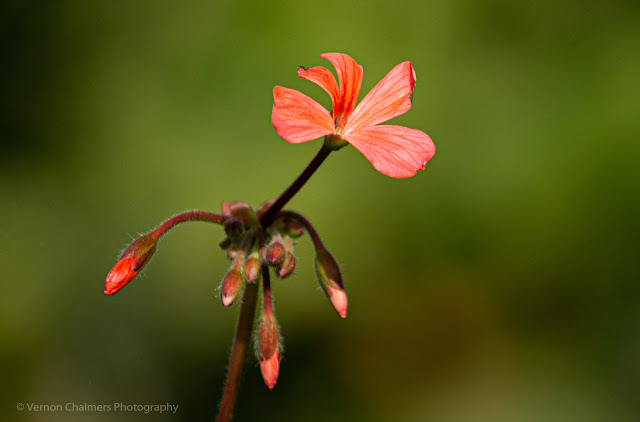Lens Minimum Focusing Distance (MFD) is an important consideration when longer focal length lenses (i.e. 300mm to 400mm) are used for close-up (butterflies and / or flower) photography.
Lens Minimum Focusing Distance : Canon Lenses
Updated: Understanding MFD of Canon Camera Lenses
Updated: Understanding MFD of Canon Camera Lenses
 |
| Lens Minimum Focusing Distance (MFD) : Canon EF 50mm f/1.8 STM Lens |
What is Lens Minimum Focusing Distance (MFD)?
MFD is the minimum distance between a camera sensor and image / subject in front of the lens that will allow focus with a specific lens. Lens MFD is measured in meters (and displayed as such i.e. 0.98m or 3.5m).
MFD is an important factor for close-up photography when using zoom or non-zoom lenses (with / without lens extension tubes or lens close-up filters).
Most modern Canon EF and RF 300mm - 500mm (and other) telephoto / zoom lenses will have reasonable MFD's for capturing close-up subjects such as butterflies and flowers.
Canon Lens MFD Examples:
- Canon RF 100-500mm F4.5-7.1L IS USM Lens MFD = 0.90m
- Canon EF 100-400mm f/4.5-5.6L IS II USM Lens MFD = 0.98m
- Canon EF 100-400mm f/4.5-5.6L IS USM Lens MFD = 1.8m
- Canon EF 400mm f/5.6L USM Lens MFD = 3.5m
Helmeted Guineafowl at KirstenBosch Garden
Helmeted Guineafowl at an MFD of 0.98m using the Canon EF 100-400mm f/4.5-5.6L IS II USM Lens at Kirstenbosch. As this image was in the shade I would centernerly not achieved the same image quality / MFD with the Canon EF 100-400mm f/4.5-5.6L IS USM Lens.
Helmeted Guineafowl at an MFD of 0.98m using the Canon EF 100-400mm f/4.5-5.6L IS II USM Lens at Kirstenbosch. As this image was in the shade I would centernerly not achieved the same image quality / MFD with the Canon EF 100-400mm f/4.5-5.6L IS USM Lens.
 |
| Helmeted Guineafowl with MFD @ .98m : EF 100-400mm f/4.5-5.6L IS II USM Lens |
Higher quality lenses will allow substantial cropping for creating expectable to reasonably high-quality close-up images of butterflies and flowers. Being a few meters away in creating a close-up image of a butterfly or a flower should still yield an acceptable result.
The specific Canon EOS / EOS R Full Frame or APS-C camera body used (ito image sensor, megapixels, etc.) could also have an impact on cropping (and additional post-processing) quality of the image.
For the attached butterfly images (at Woodbridge Island) I used the Canon EF 400mm f/5.6L USM lens while photographing birds in flight.
For most of my Kirstenbosch butterfly and flower images I use the Canon EF 100-400mm f/4.5-5.6L IS USM (Mark I) lens.
Understanding Lens Minimum Focusing Distance
"The minimum focusing distance of a lens refers to the closest distance at which a lens can focus and still form a sharp image on the camera sensor or film. It's the minimum distance between the subject being photographed and the camera sensor when the subject is in focus. This distance varies depending on the lens and its focal length.
"The minimum focusing distance of a lens refers to the closest distance at which a lens can focus and still form a sharp image on the camera sensor or film. It's the minimum distance between the subject being photographed and the camera sensor when the subject is in focus. This distance varies depending on the lens and its focal length.
Several factors contribute to the minimum focusing distance:
1. Lens Design: Different lenses have varying construction and capabilities. Macro lenses, for example, are designed to focus at much closer distances compared to standard lenses. This is because they are optimized for close-up photography.
2. Focal Length: In general, lenses with longer focal lengths tend to have a longer minimum focusing distance. Telephoto lenses, due to their longer focal lengths, often have longer minimum focusing distances compared to wide-angle or standard lenses.
3. Internal Mechanism: The internal structure and mechanisms of the lens play a significant role. Some lenses have a floating element design or internal focusing mechanisms that allow them to focus at very close distances.
4. Camera System: The minimum focusing distance is also influenced by the camera system itself. The distance between the lens mount and the sensor or film in the camera body can affect the lens's ability to focus at close distances.
When a lens reaches its minimum focusing distance, it may not be able to focus on subjects closer than that distance, resulting in blurry images or difficulty achieving focus. This limitation is especially relevant in scenarios where photographers want to capture very small subjects or details at extremely close range.
Some lenses, particularly macro lenses, are specifically designed to excel at focusing on subjects at very close distances, making them suitable for capturing small objects with great detail, such as insects, flowers, or other intricate subjects.
Understanding a lens's minimum focusing distance is crucial for photographers, especially for those interested in macro or close-up photography. It allows them to determine the closest distance from which they can capture sharp and detailed images using their specific lenses." (Source: ChatGPT 2023)
 |
| Butterfly Woodbridge Island with Canon 7D Mark II / EF 400mm f/5.6L USM lens |
 |
| Small Flower Kirstenbosch, Canon 70D / EF 100-400mm f/4.5-5.6L IS USM lens |